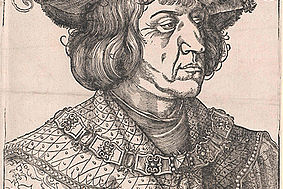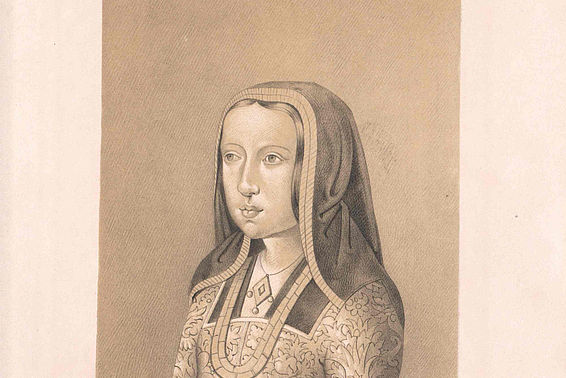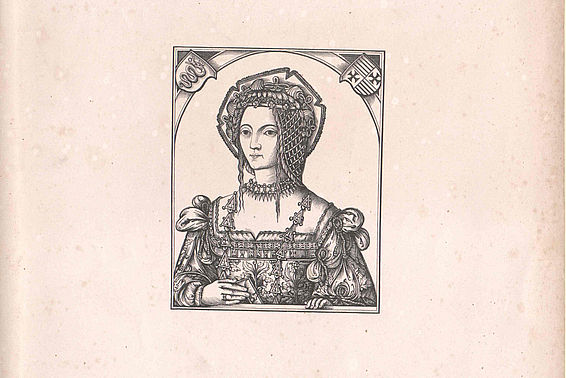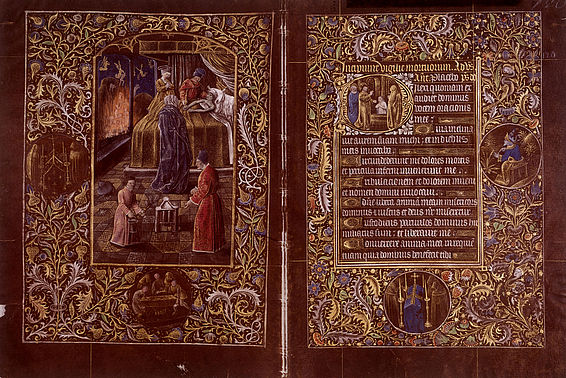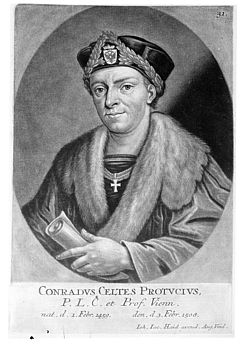1500: Emperor Maximilian I and the Origins of the "Bibliotheca Regia"
Maximilian I (1459–1519), known as the "Last Knight", succeeded his father, Frederick III, as King of the Romans in 1493, and as Holy Roman Emperor in 1508. He himself was the author and co-author of works related to his biography and systematically added to his father’s library. Fervently interested in the arts and sciences, he was in contact with leading contemporary scholars and artists. His sophisticated book projects included such works as The Triumph of Emperor Maximilian I (with A. Altdorfer, A. Dürer, H. Burgkmair), Theuerdank (a biographical novel about his journey to his bride in Burgundy), The White King, the sumptuous Tomb of Maximilian, and his Arsenal Books.
Through his marriage to Mary of Burgundy (1457–1482), important works of Burgundian and Northern French book art passed into the possession of the Habsburg family. The book treasure from Burgundy, which was worth 100,000 guilders at the time, was the equivalent of an eighth of the entire dowry brought into the marriage by Mary of Burgundy. This treasure, which only arrived in Vienna in 1581, included such magnificent manuscripts as the Book of Hours of Mary of Burgundy, the Chronicles of Jerusalem, and the Statute Book of the Order of the Golden Fleece. Through Emperor Maximilian’s second wife, Bianca Maria Sforza (1472–1510), masterpieces of Italian book art in her possession were incorporated into the library.
In addition to Austrian manuscripts produced at the court’s illumination workshop, examples of Bohemian, French, and Italian book art representing the most important developments in European book illumination were kept at the imperial library. Maximilian I moved parts of the library to Wiener Neustadt, while other parts were stored at the castles in Vienna and, starting around 1500, Innsbruck.
In 1504, the famous humanist Conrad Celtis (1459–1508), who was entrusted with the administration and enlargement of the emperor’s library, was the first to refer to it as a "Bibliotheca Regia", a royal library.
Excerpt from Conrad Celtis’s Rhapsodia, Augsburg, 1505:
"I have busily carried out, with all the diligence and attention I am capable of, Your noble intentions and orders and established the royal library, which although it is still small in scale, is well endowed with Greek, Latin, and exotic authors; the scientific books recently purchased by Your Majesty, together with the larger globes and maps that depict the skies and those that depict the earth have been integrated systematically."

